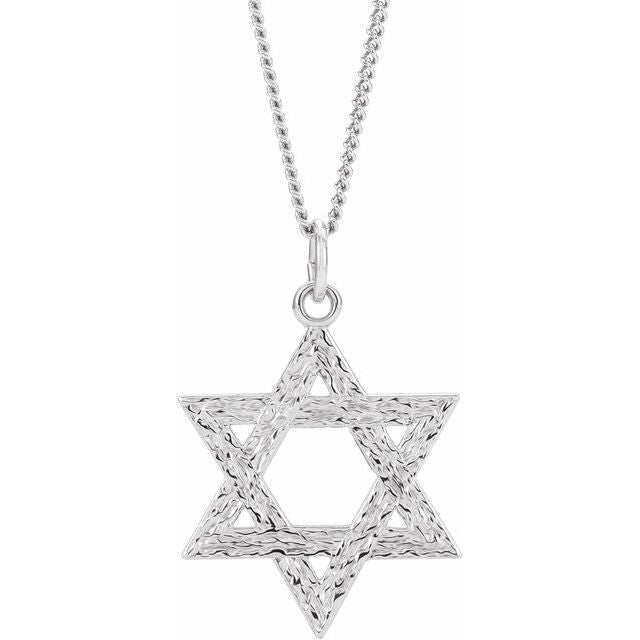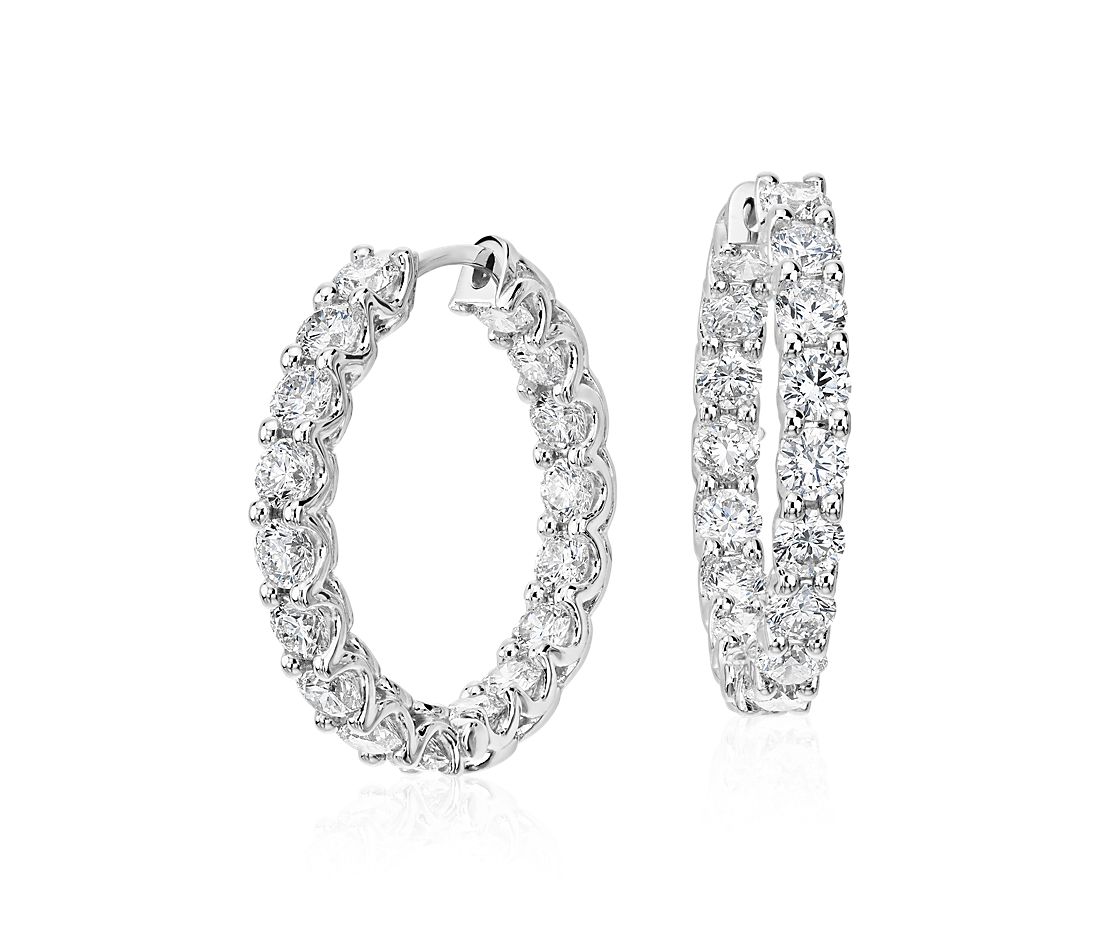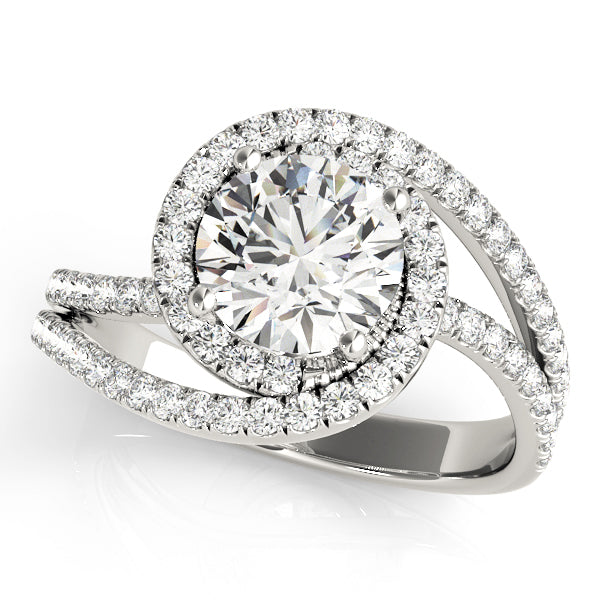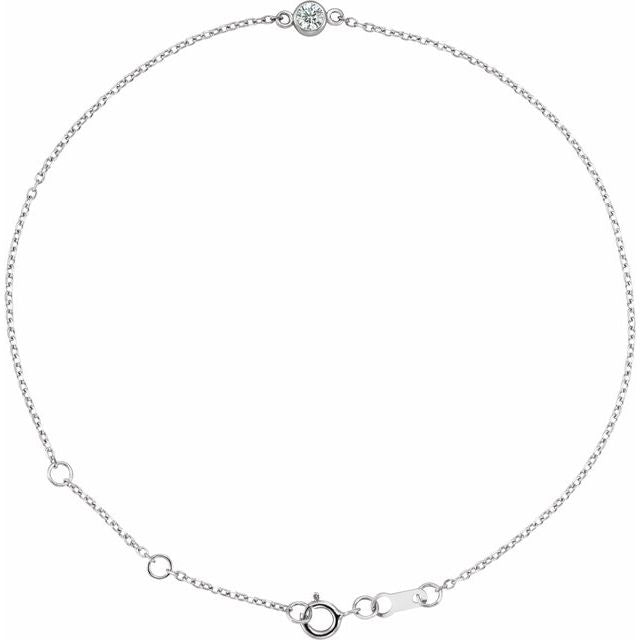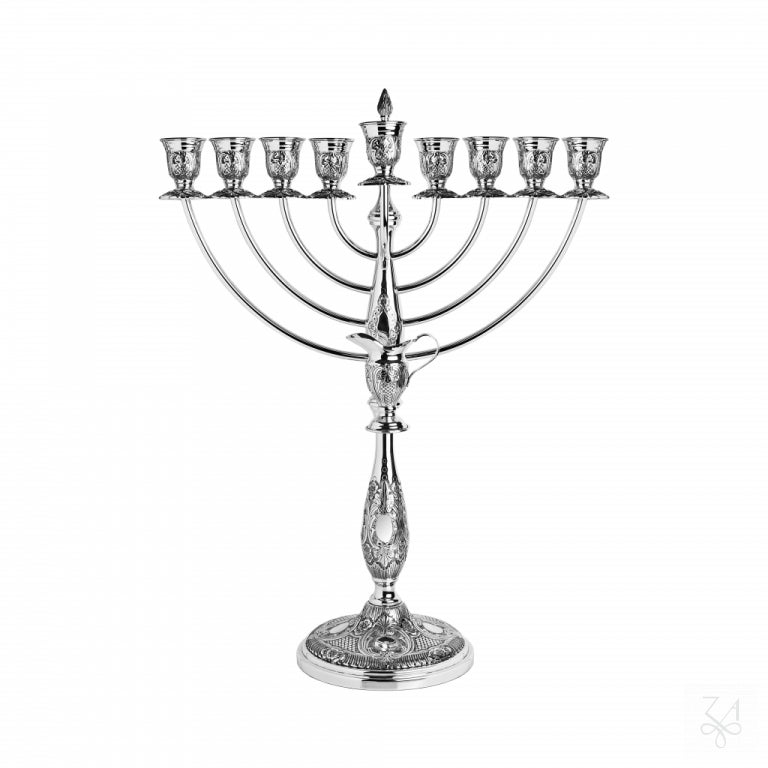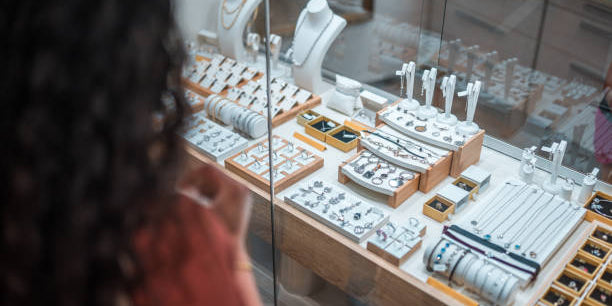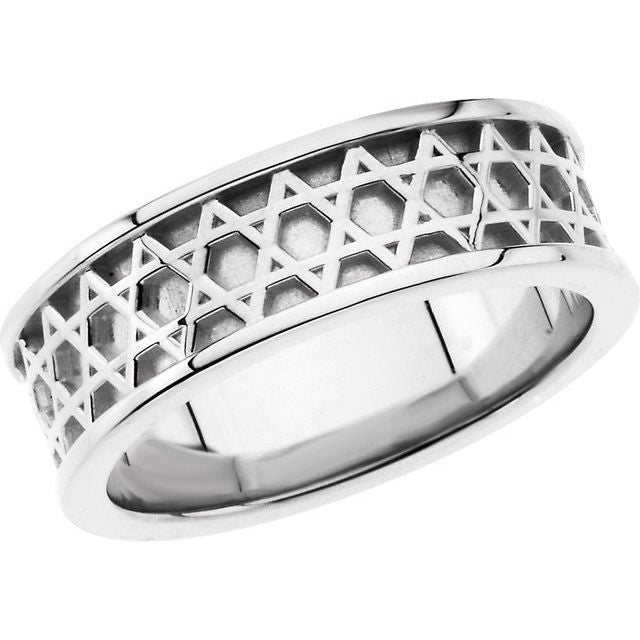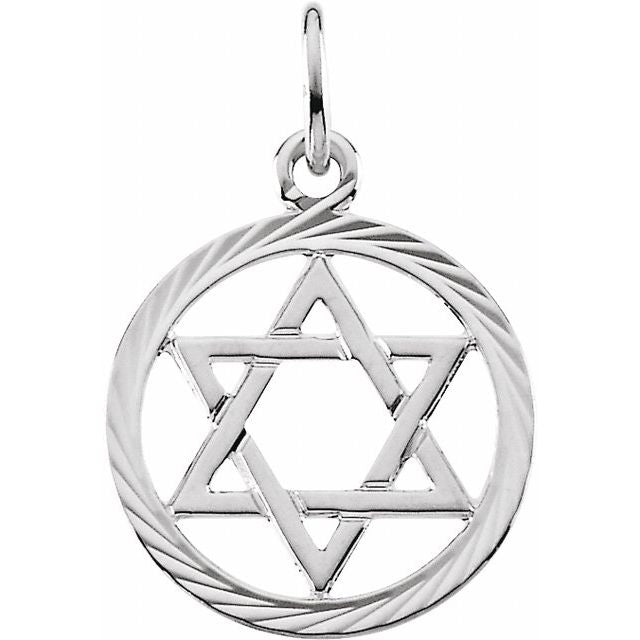
In a world where fashion trends come and go with dizzying speed, there's something reassuringly enduring about sterling silver jewelry. That gleaming, lustrous metal has adorned human bodies for centuries, transcending fleeting fads and maintaining its allure across generations. But beyond its undeniable beauty, sterling silver jewelry represents something increasingly rare in our disposable culture: a genuine investment opportunity accessible to almost anyone.
When we think of "investment," our minds often leap to stocks, real estate, or perhaps gold bullion locked away in a safe. Rarely do we consider the delicate silver chain around our neck or those elegant earrings as financial assets. Yet, perhaps we should. Sterling silver jewelry occupies a unique position at the intersection of personal adornment, artistic expression, and tangible value—a trifecta that makes it worthy of consideration as part of a diversified investment approach.
In this exploration of sterling silver as an investment, we'll delve into the historical significance of this precious metal, understand what exactly makes something "sterling," examine the factors that influence its value, and discover why adding silver pieces to your collection might be one of the smartest—and most beautiful—investment decisions you can make.

The Rich History of Sterling Silver
Silver's relationship with humanity stretches back over 5,000 years. Ancient civilizations from the Egyptians to the Greeks and Romans prized silver for its luster and malleability. They crafted exquisite jewelry, tableware, and ceremonial objects that demonstrated both artistic prowess and wealth. Silver became so intertwined with concepts of value that it formed the basis of many early monetary systems.
The term "sterling silver" itself has fascinating origins dating back to 12th-century England. The most widely accepted theory suggests the name derives from the Easterling Germans, who were known for producing silver of exceptional purity. The English crown adopted this standard—92.5% pure silver alloyed with 7.5% copper—to create a durable yet valuable material for coinage. This precise composition became known as "sterling," and it remains the international standard for fine silver jewelry to this day.
Throughout the centuries, sterling silver has maintained its position as a symbol of refinement and status. During the Victorian era, elaborate silver jewelry became a hallmark of social standing. The Art Nouveau and Art Deco movements of the early 20th century embraced silver as a medium for innovative design. Even today, in our digital age, the appeal of tangible, handcrafted silver jewelry endures, perhaps as a counterpoint to our increasingly virtual existence.
This historical persistence speaks to silver's fundamental value proposition: it combines intrinsic worth with aesthetic appeal in a way few other investments can match.

Understanding Sterling Silver: Composition and Quality
Before considering sterling silver as an investment, it's essential to understand exactly what you're buying. Not all silver jewelry is created equal, and knowing how to identify quality pieces is crucial to making wise investment choices.
Sterling silver, by definition, contains 92.5% pure silver and 7.5% other metals, typically copper. This specific alloy strikes an ideal balance between purity and practicality. Pure silver (99.9% silver, also called fine silver) is too soft for everyday jewelry, prone to scratching and bending. The addition of copper creates a more durable material while maintaining silver's desirable properties.
When shopping for sterling silver, look for the hallmark "925," which indicates the piece meets the sterling standard. This marking is your first assurance of quality. In the United States, any item marketed as sterling silver must legally meet this 92.5% threshold and be properly stamped. International pieces may carry different hallmarks depending on their country of origin, but reputable silver will always be marked in some way.
Beyond the basic sterling composition, quality silver jewelry exhibits several characteristics worth noting:
Craftsmanship matters enormously in determining a piece's investment potential. Well-crafted sterling silver shows even coloration, smooth edges, and secure connections. Examine clasps, links, and settings carefully—quality construction ensures longevity, which directly impacts investment value.
Weight also serves as an indicator of quality. Substantial sterling silver pieces contain more precious metal and generally represent better value. Beware of hollow or extremely lightweight items marketed as sterling; while they may technically meet the 92.5% requirement, their minimal silver content limits their investment potential.
The reputation of the designer or manufacturer significantly influences both initial and long-term value. Established silver houses like Tiffany & Co., Georg Jensen, or David Yurman command premium prices because of their recognized quality standards and design excellence. Similarly, artisan-made pieces by recognized silversmiths often appreciate more rapidly than mass-produced items.
Understanding these quality indicators helps distinguish between sterling silver as mere adornment and sterling silver as investment. The former may bring pleasure but little financial return; the latter offers both aesthetic enjoyment and potential appreciation.
The Investment Case for Sterling Silver Jewelry
When evaluating sterling silver jewelry as an investment, several compelling factors emerge that distinguish it from other investment vehicles. Let's examine these advantages in detail.
First, sterling silver jewelry offers intrinsic value. Unlike many investments that exist primarily as numbers on a screen, silver is tangible. It possesses actual material worth based on its silver content. This intrinsic value provides a floor for your investment—regardless of design trends or brand reputation, sterling silver will always be worth at least the market value of its silver content. In times of economic uncertainty, this tangible aspect becomes particularly attractive.
Second, sterling silver jewelry can appreciate significantly beyond its metal value. While the price of raw silver fluctuates with commodity markets, well-crafted silver jewelry often appreciates independently of these fluctuations. This appreciation stems from multiple sources: the reputation of the designer, the quality of craftsmanship, the rarity of the piece, and changing consumer preferences. Vintage and antique silver jewelry frequently sells for many times its metal value, demonstrating the potential for substantial long-term returns.
Third, silver jewelry offers accessibility that many investments lack. Quality pieces can be purchased for relatively modest sums, allowing investors to begin building a collection without significant capital. This accessibility makes silver jewelry an excellent entry point for novice investors or those looking to diversify a portfolio with tangible assets.
Fourth, unlike many investments, sterling silver jewelry delivers immediate utility and enjoyment. While your stock certificates remain unseen in a brokerage account, silver jewelry adorns and enhances your daily life. This dual function—investment and adornment—represents a unique advantage. Few other investments allow you to derive pleasure from your assets while they potentially appreciate.
Fifth, sterling silver jewelry often benefits from what economists call "the endowment effect"—our tendency to value things more highly once we own them. This psychological phenomenon can work in an investor's favor, as the market for silver jewelry includes buyers who form emotional attachments to pieces, potentially driving prices higher than purely rational valuation would suggest.
Finally, silver jewelry can serve as an inflation hedge. Historically, precious metals have maintained their purchasing power during inflationary periods when paper currencies lose value. While silver may not match gold's reputation as an inflation hedge, quality silver jewelry combines the inflation-resistant properties of precious metal with the additional value derived from craftsmanship and design.
These factors collectively build a compelling case for including sterling silver jewelry in a diversified investment approach. However, like any investment, silver jewelry comes with considerations and potential drawbacks that prudent investors should understand.
Factors That Influence Value and Appreciation
The investment potential of sterling silver jewelry depends on numerous factors that influence both initial value and long-term appreciation. Understanding these factors helps investors make informed decisions when building a collection.
Designer reputation stands as perhaps the most significant value driver in silver jewelry. Pieces created by renowned designers or prestigious houses command premium prices and often appreciate more rapidly than anonymous work. Names like Georg Jensen, Tiffany & Co., David Yurman, and John Hardy carry established reputations for quality and design excellence. Similarly, pieces by recognized artisan silversmiths often appreciate substantially over time, particularly as these artists build their reputations or after they cease production.
Craftsmanship quality directly impacts both initial value and longevity. Well-crafted silver jewelry features precise construction, secure connections, and meticulous finishing. These qualities ensure the piece will withstand wear and maintain its appearance over time—essential considerations for long-term value. Examine potential investments carefully for craftsmanship indicators: even weight distribution, smooth edges, secure settings, and proper hallmarking.
Rarity significantly influences appreciation potential. Limited edition pieces, discontinued designs, and items from specific historical periods often increase in value as they become scarcer. Particularly desirable are pieces that represent significant moments in design history or exemplify a designer's signature style. Collectors frequently compete for these rare examples, driving prices upward over time.
Historical significance can transform ordinary silver jewelry into valuable collectibles. Pieces associated with particular cultural movements, historical events, or notable individuals often appreciate beyond their intrinsic value. For example, Art Deco silver jewelry from the 1920s and 1930s has seen substantial appreciation as this design period has gained recognition and admirers.
Condition remains paramount for investment-grade silver jewelry. While minor wear consistent with age (often called "patina") may not detract from value, significant damage, repairs, or missing elements can dramatically reduce worth. Store and maintain your silver jewelry properly to preserve its condition and investment potential.
Market trends inevitably influence silver jewelry values, though quality pieces typically transcend short-term fluctuations. Certain styles cycle in and out of fashion, affecting demand and prices. However, well-designed, well-crafted silver jewelry often maintains its appeal regardless of current trends. The best investment pieces typically feature timeless design elements rather than following fleeting fads.
Provenance—the documented history of ownership—can substantially enhance value, particularly for significant pieces. Jewelry with clear provenance connecting it to notable individuals or collections often commands premium prices. Maintain records of purchase, certificates of authenticity, and any historical documentation for your silver jewelry investments.
The raw silver market also influences values, though perhaps less directly than might be expected. While fluctuations in silver commodity prices affect the base value of sterling jewelry, the relationship isn't strictly proportional. A well-crafted silver necklace doesn't automatically double in value when silver prices double, as much of its worth derives from design and craftsmanship. Nevertheless, rising silver prices generally support higher valuations for sterling jewelry.
Understanding these value drivers helps investors identify pieces with strong appreciation potential. The most promising investments typically combine multiple positive factors—excellent craftsmanship, recognized designer, historical significance, and good condition.
Building a Sterling Silver Jewelry Investment Collection
Creating a silver jewelry collection with investment potential requires strategy and knowledge. Whether you're starting with a modest budget or substantial resources, these approaches can help maximize both enjoyment and potential returns.
Begin by educating yourself about sterling silver jewelry. Study different periods, designers, and styles to develop an eye for quality and value. Visit museums with decorative arts collections, browse auction catalogs, and read reference books on silver jewelry. This knowledge foundation will help you recognize undervalued pieces and avoid overpriced items.
Consider focusing your collection on a specific area. Specialization allows you to develop deeper expertise and often leads to better investment decisions. You might concentrate on a particular designer, historical period, jewelry type, or regional style. Focused collections frequently hold greater value than random assemblages, as they tell a coherent story that appeals to future collectors and buyers.
When purchasing, prioritize quality over quantity. A single exceptional piece often represents better investment value than multiple mediocre items. Look for sterling silver jewelry with superior craftsmanship, distinctive design, and excellent condition. Pieces that exemplify a designer's signature style or represent significant innovations typically hold their value particularly well.
Consider both established and emerging designers for your collection. Works by recognized masters provide stability and proven value, while pieces by talented emerging silversmiths offer growth potential as these artists gain recognition. This balanced approach combines security with opportunity.
Purchase from reputable sources that provide authentication and documentation. Established jewelry dealers, respected auction houses, and designer boutiques typically offer greater assurance of authenticity than unverified online marketplaces or casual sellers. Always insist on proper documentation, including certificates of authenticity when available.
Pay attention to condition and completeness. Missing elements, repairs, or significant wear can substantially reduce both current value and appreciation potential. Examine pieces carefully before purchasing, ideally with magnification, and request condition reports for items you cannot inspect personally.
Store and maintain your collection properly to preserve its condition and value. Keep silver jewelry in tarnish-resistant cloth or containers, away from humidity and chemicals. Clean pieces gently using appropriate methods that won't damage finishes or components. Consider insurance for valuable items, with documentation including photographs and appraisals.
Track provenance and maintain records for each piece in your collection. Document the designer, creation date, purchase information, and any historical significance. These records enhance both current value and future marketability. For significant pieces, professional appraisals provide important documentation of value for insurance and eventual sale.
Remain patient with your investment timeline. Quality silver jewelry typically appreciates over years or decades rather than months. This long-term perspective aligns with silver jewelry's dual purpose—you can enjoy wearing your investments while they potentially increase in value.
Finally, buy what you genuinely appreciate. While investment potential matters, personal connection to the pieces in your collection enhances both enjoyment and commitment to proper maintenance. The most successful collectors typically combine investment acumen with genuine passion for the items they acquire.
Caring for Your Sterling Silver Investment
Proper maintenance of sterling silver jewelry is essential for preserving both its beauty and investment value. Silver requires specific care to prevent tarnish, damage, and deterioration that could diminish its worth over time.
Tarnish represents the most common issue affecting sterling silver. This surface discoloration occurs when silver reacts with sulfur compounds in the air, creating silver sulfide. While tarnish doesn't permanently damage silver, it obscures its lustrous appearance and should be addressed properly. To minimize tarnish, store silver jewelry in tarnish-resistant cloth bags or containers specifically designed for silver. Keep pieces away from bathroom humidity, household chemicals, and direct sunlight, all of which can accelerate tarnishing.
When wearing silver jewelry, apply cosmetics, perfumes, and hairsprays before putting on your pieces. These products often contain chemicals that can accelerate tarnishing or even damage silver surfaces. Similarly, remove silver jewelry before swimming in chlorinated pools or soaking in hot tubs, as these environments can cause discoloration and potential damage.
Clean your sterling silver regularly but gently. For routine cleaning, a soft polishing cloth specifically designed for silver effectively removes light tarnish and restores shine without abrasive action. For more significant tarnish, commercial silver polishes formulated for jewelry work well, but follow directions carefully and avoid contact with gemstones or pearls that might be damaged by cleaning compounds.
For pieces with intricate details or textured surfaces, where polishing cloths cannot reach, consider these gentle cleaning methods: Create a solution of mild dish soap and warm water, using a soft brush (like a baby toothbrush) to gently clean crevices. Rinse thoroughly and dry completely with a soft cloth. Alternatively, line a glass bowl with aluminum foil, add hot water and a tablespoon of baking soda, then immerse your silver jewelry so it contacts the foil. This creates a chemical reaction that transfers the tarnish from the silver to the foil without abrasion.
Be particularly cautious with silver jewelry that incorporates other materials. Gemstones, pearls, enamel work, or organic materials like coral may require different cleaning approaches than pure silver. When in doubt about how to clean a complex piece, consult a professional jeweler rather than risking damage.
Inspect your silver jewelry regularly for signs of wear or damage. Check clasps, links, and settings to ensure they remain secure. Address any issues promptly—small repairs addressed early typically cost less and prevent more significant damage that could diminish value.
Consider professional cleaning and maintenance for valuable pieces. Professional jewelers have the tools and expertise to clean and restore silver jewelry without risking damage. This investment in professional care often pays dividends in preserved value, particularly for complex or highly valuable items.
For pieces you don't wear regularly but maintain as investments, proper storage becomes even more critical. Consider these additional storage recommendations: Place anti-tarnish strips in storage containers and replace them according to manufacturer guidelines. Avoid storing different pieces together where they might scratch or tangle. Maintain moderate humidity levels in storage areas—excessive dryness or moisture can affect silver adversely.
Remember that some degree of patina—the subtle darkening that develops in recessed areas over time—may actually enhance the value of certain silver pieces, particularly antiques. This natural aging process can highlight design details and authenticate a piece's age. Before polishing antique silver jewelry to bright perfection, consult an expert to determine whether preserving some patina might be preferable.
With proper care, your sterling silver jewelry investments can maintain their beauty and value for generations, potentially appreciating significantly over time.
The Market for Sterling Silver: Current Trends and Future Outlook
Understanding the current market dynamics and future prospects for sterling silver jewelry helps investors make informed decisions and time their purchases and sales advantageously.
The contemporary market for sterling silver jewelry reflects several significant trends. First, we're witnessing increased consumer interest in sustainable and ethical jewelry options. Sterling silver, particularly when recycled or responsibly sourced, offers a more sustainable alternative to some other jewelry materials. This ethical dimension has expanded silver's appeal among environmentally conscious consumers, potentially supporting long-term value growth.
Second, the market shows growing appreciation for artisanal craftsmanship. As mass-produced goods dominate many sectors, handcrafted sterling silver jewelry offers distinctive character and personal connection. This trend favors investment in pieces by identified silversmiths with demonstrated skill and artistic vision, rather than anonymous commercial productions.
Third, we're seeing renewed interest in heritage designs and techniques. Contemporary designers increasingly draw inspiration from historical silver traditions, creating modern pieces with references to Art Nouveau, Arts and Crafts, or mid-century modernist styles. This trend suggests potential appreciation for both authentic vintage pieces and quality contemporary work that references these influential design movements.
Fourth, the market demonstrates increasing sophistication among collectors and investors. Today's buyers research provenance, understand craftsmanship indicators, and recognize designer signatures more thoroughly than previous generations. This knowledge-driven marketplace tends to reward quality more consistently, potentially reducing speculation in inferior pieces while supporting values for exceptional examples.
Looking toward the future, several factors suggest a positive outlook for sterling silver jewelry as an investment. The growing global middle class, particularly in Asian markets, continues to expand the potential buyer pool for quality silver jewelry. As new collectors enter the market, demand for limited historical pieces naturally increases, potentially driving appreciation.
Additionally, the increasing cost and environmental impact of mining may constrain future silver supplies. While recycling mitigates some supply concerns, the fundamental scarcity of silver as a natural resource supports its long-term value proposition. Sterling silver jewelry represents a refined form of this increasingly precious material.
Technological developments in silver jewelry creation present both opportunities and challenges for investors. Advanced techniques like 3D printing enable new design possibilities but may also affect perceptions of craftsmanship and exclusivity. Investors should consider how these innovations might influence future valuations, potentially favoring pieces that combine traditional hand-craftsmanship with innovative design approaches.
The growing online marketplace for vintage and estate jewelry has increased price transparency and market access, benefiting informed investors. Digital platforms allow collectors to compare offerings globally, potentially identifying undervalued pieces in less sophisticated markets. However, this same transparency may eliminate some of the dramatic arbitrage opportunities that previously rewarded specialized knowledge.
Economic uncertainty typically benefits tangible asset investments, including precious metals and quality jewelry. As global economic systems face unprecedented challenges, sterling silver jewelry's combination of intrinsic metal value and artistic merit may attract investors seeking alternatives to traditional financial instruments.
For investors considering market timing, several approaches merit consideration. Some collectors focus on acquiring works by mid-career silversmiths showing artistic promise but not yet commanding premium prices. Others specialize in identifying undervalued periods or styles before they experience broader market recognition. Still others concentrate on acquiring signature pieces from established designers, accepting higher entry costs for greater value stability.
Whatever approach you choose, remember that sterling silver jewelry typically rewards patient investment. The most significant appreciation often occurs over decades rather than years, as pieces transition from contemporary to vintage to antique status, potentially gaining historical significance along the way.
Conclusion: Silver Linings for Your Investment Portfolio
Sterling silver jewelry offers a compelling investment proposition that extends beyond financial considerations. It combines tangible value, artistic merit, personal enjoyment, and historical connection in ways few other investments can match. As we've explored throughout this discussion, quality silver pieces can appreciate significantly over time while simultaneously enhancing your daily life—a dual benefit rarely found in traditional investment vehicles.
The accessibility of sterling silver jewelry makes it particularly attractive for beginning collectors and investors. With quality pieces available across a wide price spectrum, almost anyone can start building a collection with genuine investment potential. This democratic aspect of silver jewelry investing contrasts sharply with many other collectible categories that require substantial capital for meaningful participation.
The key to successful investment in sterling silver jewelry lies in education, discernment, and patience. Understanding quality indicators, recognizing significant designers, appreciating historical contexts, and maintaining pieces properly all contribute to positive outcomes. The most successful investors typically develop specialized knowledge in particular areas of the silver jewelry market, allowing them to recognize value where others might not.
Perhaps most importantly, sterling silver jewelry investments offer something increasingly rare in our digital age: tangible beauty and connection to human creativity. Each piece represents not just precious metal but the vision and skill of its creator, captured in enduring form. This combination of material value and artistic expression provides a hedge not just against inflation but against the ephemerality of modern life.
As you consider adding sterling silver jewelry to your investment portfolio, remember that the greatest returns often come from pieces that speak to you personally. The silver bracelet that captures your imagination, the vintage necklace that connects you to a particular historical moment, the artisan-crafted earrings that demonstrate exceptional skill—these pieces merit your investment not just for their potential financial appreciation but for the ongoing pleasure they provide.
In an uncertain world, sterling silver jewelry offers something reassuringly substantial: beauty you can hold in your hand, history you can wear, and value that has endured for centuries. Whether you're an experienced collector or just beginning to explore investment options beyond traditional financial instruments, quality sterling silver jewelry deserves consideration as part of a diversified approach to preserving and growing wealth while enhancing your daily experience.
The next time you admire a gleaming piece of sterling silver jewelry, look beyond its immediate appeal to recognize its potential as a meaningful investment—one that offers both silver linings for your financial future and tangible beauty for your present enjoyment.
References
Bernstein, P. (2021). The Power of Gold: The History of an Obsession. Wiley Publishing. https://www.wiley.com/en-us/The+Power+of+Gold%3A+The+History+of+an+Obsession-p-9780471252108
Phillips, C. (2019). Jewelry: From Antiquity to the Present. Thames & Hudson. https://thamesandhudson.com/jewelry-from-antiquity-to-the-present-9780500202876
The Silver Institute. (2022). World Silver Survey 2022. https://www.silverinstitute.org/wp-content/uploads/2022/04/World-Silver-Survey-2022.pdf
Untracht, O. (2011). Jewelry Concepts and Technology. Doubleday. https://www.penguinrandomhouse.com/books/324671/jewelry-concepts-and-technology-by-oppi-untracht/
Victoria and Albert Museum. (2023). Silver Collection Highlights. https://www.vam.ac.uk/collections/silver



